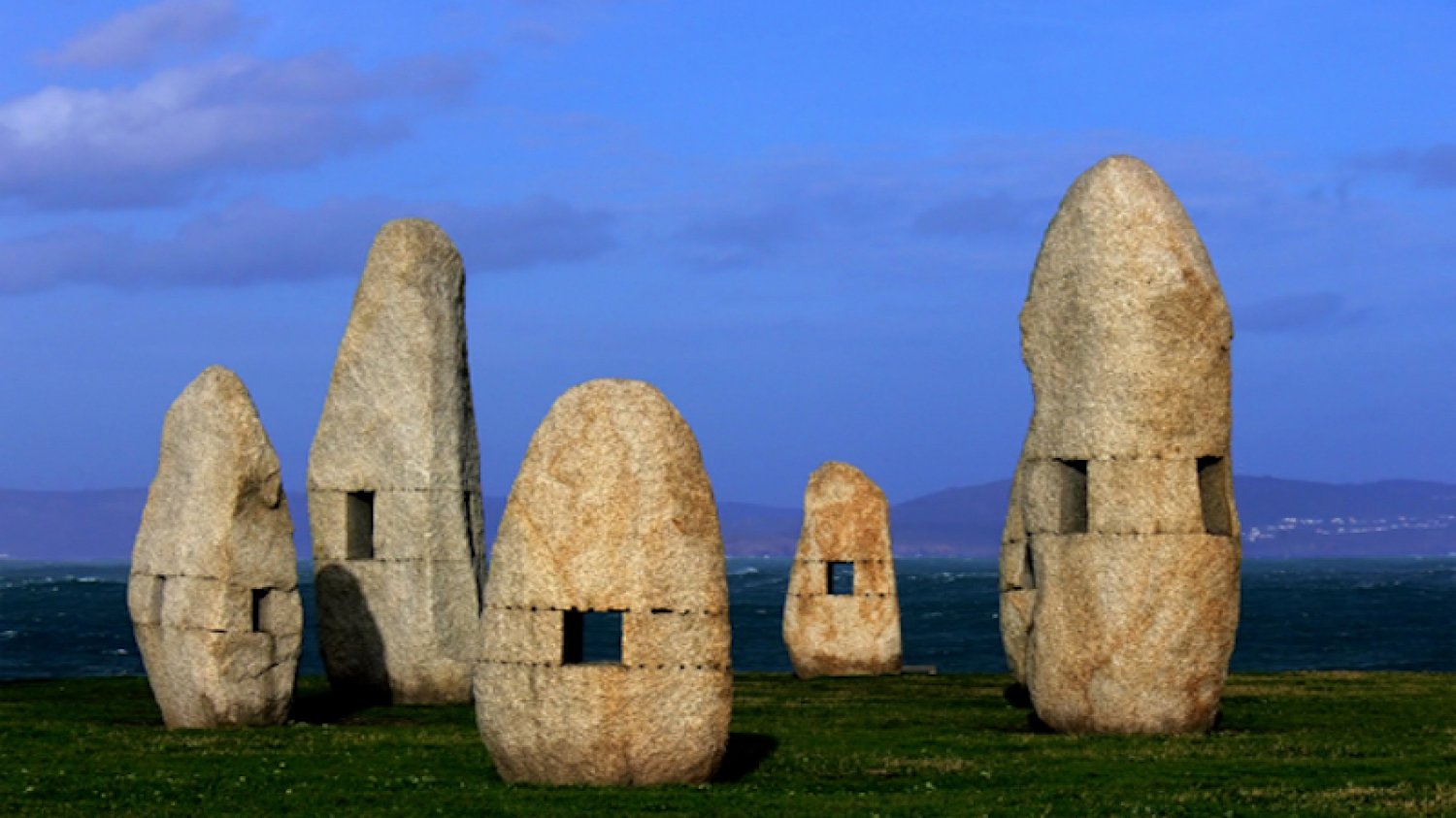
Create your own journey; Experience the best of Northern Spain at your own pace
This website uses its own and third-party cookies, for the proper functioning of the site and to generate usage statistics.
By continuing to browse we understand that you consent to our �ookie policy

2016-11-03
Nancy Harmon Jenkins ©2008
The very look of Galicia--lush, green pasturelands, dark stone farmhouses with thatched or slate-tiled roofs, dramatic sea coasts incised with deep fjord-like rías where the sea thrusts up into the land—all of this speaks of a different, green and rainy Spain, where the skirl of bagpipes, called gaítas, is more typical than the strumming of Spanish guitars.
Galicia’s food too is far from the Mediterranean cuisine of the rest of the country. It’s not surprising that potatoes are the vegetable par excellence and pork is the meat of choice, while beef from the native Rubia Gallega cattle is highly prized. It’s also not surprising, given the long, indented coast of the region bordering rich Atlantic waters, that seafood of all kinds is important in the diet and the economy. Indeed the seafood selection is spectacular—from scallops (vieiras)with their coral-colored roes attached, to lobsters and langostinos (Dublin Bay prawns), big spider crabs and swimming crabs, to humbler but no less delicious monkfish, grouper, and squid. Galicia’s fishing fleet is the largest in Spain and one of the largest in Europe. But Galicia is also Spain’s prime center for aquaculture, especially of mariscos or shellfish—mussels, oysters, varieties of clams—that grow to plump perfection in the sparkling waters of the rías. Mussel culture here goes back, in fact, to the late 1940s. Today Galicia is the second largest mussel-producer in the world, right behind China, with some 4,000 rafts called bateas for rope culturing the succulent bivalves.
The provinces of Orense, Lugo, La Coruña, and Pontevedra are all part of the region, while Galicia’s magnificent capital, Santiago de Compostela, with its great cathedral and historic hostal (established by Ferdinand and Isabella and now a luxury hotel), has been a destination since the 1400s for pilgrims from all over Europe. Pilgrims still walk all the way across northern Spain to worship at the shrine of Santiago (St. James), whose symbol, appropriately, is a gracefully curved scallop shell, worn by pilgrims ancient and modern.

There was a time, not too far off, when Galician wines were dismissed as thin and uninteresting but that was before savvy wine-makers got together and adopted state-of-the-art technology to produce one of the most popular Spanish wines in the United States and around the world. Albariño, a deliciously aromatic, crisp, dry, even steely white wine seems invented to go with Galician seafood. It is produced from a native grape of the same name in the Rías Baixas (REE-ahs BYE-shahs), the southern coastal region of Galicia. Other notable wines from Galicia include Ribeiro, a fresh, fruity white, and Valdeorras, both whites and reds.
Galicia also produces some delicious cheeses, most of them made from the milk of cows grazing on the region’s lush pasture. Ones to look for include tetilla, named for its curious shape like a woman's breast, a soft, supple, mild cheese, and San Simón, a smoked cheese that can develop a sharper tang. Less easy to find is Cebreiro, an aged cow’s milk cheese with a tart, slightly bitter flavor and a buttery aroma that develops more with age.
Iconic Dishes and Products of Galicia
Percebes (goose barnacles): one of the world’s most expensive seafoods, percebes are right up there with Iranian caviar in the gourmet’s list of elusive and unobtainable. Don’t be put off by the weird look of the things—like the clawed feet of some prehistoric animal—these are prized for their sweet, succulent, briny flavored “necks.” They grow only on rocks with heavy surf, hence are difficult and downright dangerous to harvest. Once harvested, they are boiled briefly in salty water and eaten as is, no sauces, no salt, usually as a tapa or an appetizer. They are expensive – on site be prepared to pay up to 162 euros per kilo, or close to $120 a pound.
Pimientos de Padrón: small green chili peppers renowned for their big, sweet flavor, these are simply grilled a la plancha and served with a sprinkling of sea salt. Consumed as a tapa, they’re usually eaten with the fingers while standing up at a bar, and relished for the occasional “hot” one that traps unwary diners.
Lacón con grelos: often considered the national dish of Galicia, this is humble fare—turnip greens slow-cooked with chunks of potato, chorizo sausage, and lightly salted pork shoulder or hocks. The greens are spicy and delicious when boiled in the pork broth and the meats give a sweet contrast to the sharp greens.
Caldeirada de pescado: rich and filling fish stew made with onions, potatoes, and a variety of fish and shellfish, often including conger eel, cooked in a garlicky vinegar sauce flavored with hot and sweet pimentón (paprika); sometimes the sauce, called salsa de ajada, is served apart.
Empanadas and empanadillas: double-crusted pies, either big ones cut in squares or wedges, or small pastries (empanadillas) that fit in the hand, these are filled with tasty savory mixtures based on tuna, pork, mussels, octopus, or other delicious combinations, often mixed with pickled (en escabeche) or plain vegetables. Empanadas were carried from Galicia all over the Hispanic world, from Chile to the Philippines, where they continue as favorite snack foods to this day. [See recipes.]
Pulpo a feira: a staple in Galician markets, fairs, and festivals, where people buy it from mobile carts called pulpeiras to eat on the spot from wooden plates or to take home, this is simply boiled and tenderized octopus, cut in chunks and mixed with olive oil, salt and sweet red pimentón (paprika). Note that this is not the smoky pimentón de la Vera, rather a mild but tasty paprika made from dried sweet red chilies.
http://www.worldsofflavorspain.com/galicia
Back